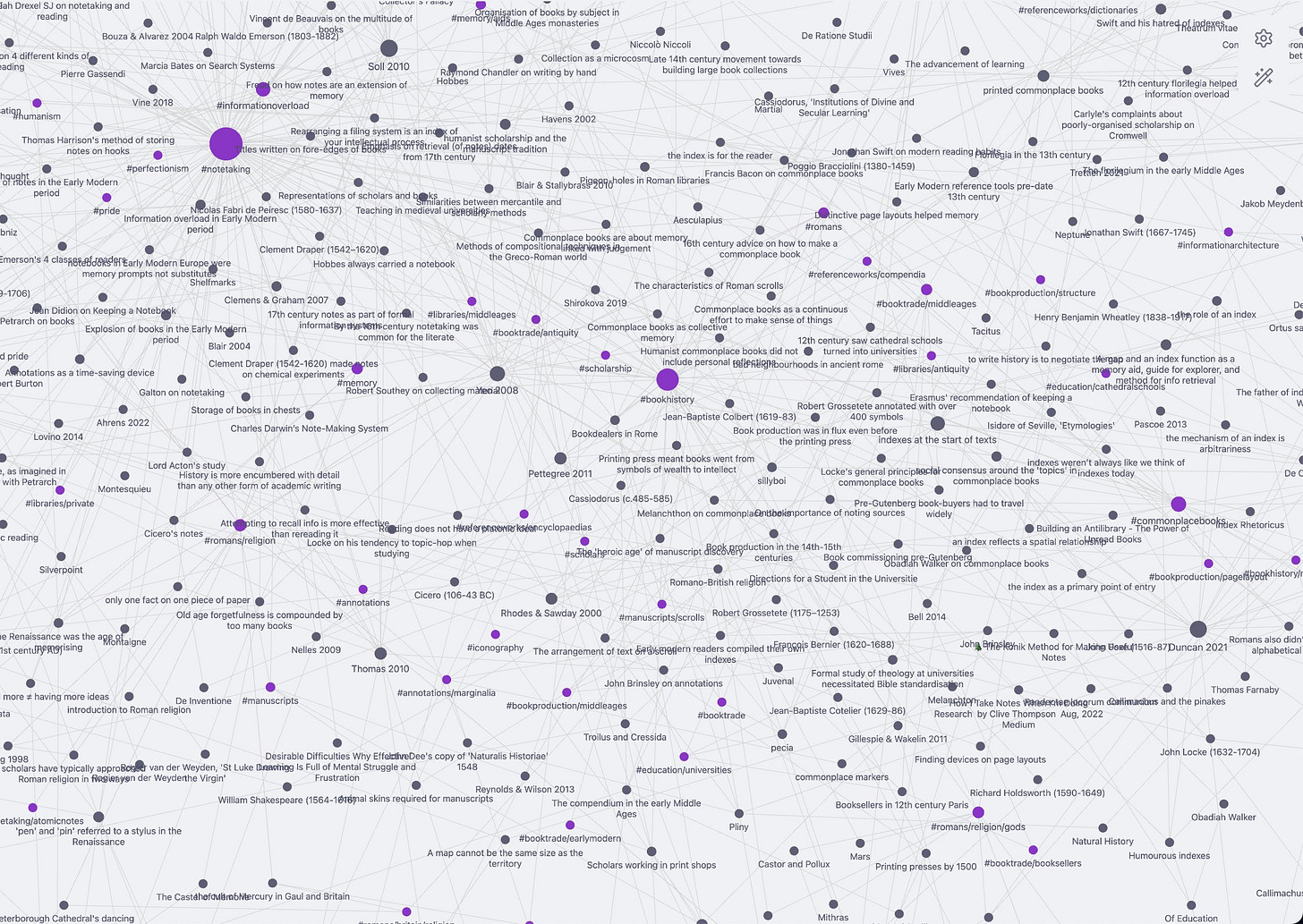A preface: what I use my vault for
‘Why I keep coming back to Obsidian’ is another post for another time, but in short: it works so damn well for what I need.
My notes mostly consist of those made from reading non-fiction books and journal articles, typically academic and usually about history (typically ending at around 1750, as this is where my interest dies). This is probably 80% of my vault, with the remaining 20% based on notes from articles I’ve read using Readwise or other sources.
This has a significant impact on how I use Obsidian, as my vault needs to make it easy to manage and cite sources correctly. I can usually remember the information without needing to check the note, as I have a good memory, but I won’t remember where I got it from.
Plugins
I have a number of plugins installed, but the main ones I rely on are:
A standard note
Below is an example of a pretty standard pair of notes.
(I’ve opened both in one view as they’re closely connected and so you can see the different types of links.)
Here, you can see examples of secondary sources, person links, secondary sources, primary sources, and linking between notes. I try to link my notes densely but thoughtfully; each link should provide some utility or insight.
So what are all these different colours and types of notes?
I use the Supercharged Links plugin to automatically format links based on the notetype (and sourceformat) YAML fields. This makes it really easy to skim across a note and see what the sources are, who’s involved, etc.
Secondary sources are in green, and the emoji at the start auto-populates based on the sourceformat YAML field. People are in yellow (with a little person emoji), primary sources (and fiction) are in blue, artwork is in pink, and Readwise source notes are in black.
Secondary sources
Secondary sources are the cornerstone of my vault. There are very few notes where I haven’t referred to a secondary source of some kind.
Below is an example of a secondary source note. On the left is the editing mode, including the YAML and Dataview queries; on the right is the reading mode.
I used to use the Zotero plugin but found it too janky – now I just use the ‘make bibliography from item’ in Zotero, paste the citation into the YAML, and manually input the rest of the data.
Person notes
My ‘person notes’ are a secret gem. This sounds strange, but it’s added a magical layer to my vault. As my notes are so heavily based around history and people, it makes a lot of sense to include notes on people that provide context.
Below is an example of a person note, somebody mentioned in my note at the top on info overload in Early Modern period. (Again, edit mode on left, reading mode on right.)
Why is this useful? Well, it provides me with some background context to why Baillet might have written about the “multitude of books” – he catalogued an entire library, in 35 volumes, by hand! I then have to question whether he can be taken as an example of a ‘normal’ perspective on books in 17th century Europe.
The ‘possible local contemporaries’ is a new addition and the jury’s out on whether it’s any use. I’ve set it so that it brings up person notes from the same century and county, but it’s only as comprehensive as my notes are (which aren’t very good for 17th century France!) and obviously bears no indication on whether they knew of each other – nor does it take into account contemporaries from outside the country who may be of a more significant influence. I’m probably going to stop bothering with this section.
Index and graph view
There are two main options for ‘visualising’ my notes and where they are. First is my ‘index’ – or, rather, it’s just all of my notes (notetype = note) arranged by tag. I can navigate this by scrolling or by searching (using ⌘+f). In an ideal world I’d have a clickable A–Z navigation option, but I’ve not been able to figure it out yet.
As I observed on twitter recently, I’m not sure that the graph view is actually that helpful. Scrolled out, you can see nothing. Scrolled in, you’re confronted with a tangled mess…
I’m sure there are probably ways to make this useful, but I’ve not yet found it. I just like it for the visuals and the reminder that I’m building a decent body of reference material over time – it feels like I’m accomplishing something, which is nice.
Wrap-up
As you can see, my Obsidian vault is very much tailored to the material I spend most of my time reading. It’s heavily based around secondary sources, time periods, and people. I focus on recording information and detail more than ideas – it’s certainly not where I generate and develop arguments – and it’s more of a personal reference tool than a thinking tool.
Also: use dataview and YAML. Seriously.









I’ve resisted obsidian. Your essay makes me think I should give it a go?